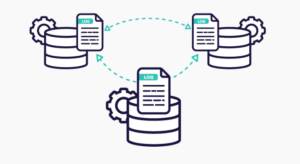
Fauna Boosts Observability with Logs

(kurhan/Shutterstock)
Fauna this week unveiled the addition of logs to its globally distributed database service, which should give customers greater observability into how their queries are performing and help reduce cloud costs.
Fauna’s document-relational database is a cloud-only affair by design. Customers don’t need to know anything about managing a distributed database or scaling it out to handle additional workload. All they need to know is how to connect applications to the serverless offering via an API on Google Cloud or AWS.
That setup has worked quite well for the hundreds of paying Fauna customers, who tend to be “forward-thinking development teams that are leveraging a lot of higher-level services,” says Eric Berg, Fauna’s CEO.
“Fauna is the most productive operational database they can pick because it’s very low overhead for them,” Berg says. “They don’t have to worry about consistency. They can leverage the flexibility of documents, but they can get the power of relational and query and they don’t have to worry about the operational overhead.”
However, hiding the underlying complexity of a modern database does have its drawbacks. Without the ability to flip levers and switches in their database configuration, Fauna customers have lacked the ability to dial in the performance and tune the database for cost-effectiveness and efficiency.
Fauna has eliminated that black box aspect of its serverless offering by providing logs, which provide observability into operations, Berg says. The new log generation capability gives customers more data about their queries, including how long they’re running and the resources they consume.
“If you owned a server, you’d be able to point something at it and look at the logs and get that information and do that tuning,” Berg says. “Now I can just pump that log data out of Fauna and pop it into that third-party observability tool.”
Armed with that information, Fauna customers will be better able to optimize their database queries, Berg says. Customers still don’t have the ability to tweak their database configuration to rein in costs, but they can change how they use Fauna Query Language, which will have an impact on database usage.
Adding observability into the database is part of Fauna’s long-range plan to bring more enterprise-grade features to the database. The company has already delivered features related to backup and recovery, data import and export, and SOC2 and GDPR compliance. Now it can check observability off that list too, Berg says.
“The number one request from customers was, hey I’m seeing ups and downs in my usage and consumption and really would like to have a better understand of what’s driving that,” he says. “Of these queries that I’ve written, which ones should I be tuning or optimizing or changing as I scale?”
Fauna has plans to add more observability functions to the database over time, but getting insight into the queries was job one, Berg says.
Berg has been shaping the direction of Fauna since June 2020, when he was brought in by the company’s co-founders, Evan Weaver and Matt Freels, to be the new CEO. Prior to that, the company was focused on building a globally distributed database with ACID transactions, a space that’s led by databases such as Google’s Spanner. Weaver and Freels hailed from Twitter, where they struggled to maintain globally consistency with their NoSQL database.
While the global consistency is still there and still important, Berg has changed course to maximize Fauna’s other attributes, such as its unique document-relational model that blends aspects of SQL and NoSQL databases, the single API endpoint, as well as its easy-to-consume serverless delivery model. These have helped to widen Fauna’s potential customer base, he says.
“When I came in, we had the global capability,” he says. “And now we’ve got a start local, grow global architecture with Fauna.”
Fauna today serves more than 300 paying customers in more than 180 countries from a handful of AWS and GCP cloud locations in the US and the EU. The company attracts customers with B2B and B2C apps, as well as IoT applications, Berg says.
Berg says Fauna is well-positioned to grow as developers become accustomed to the benefits of modern serverless databases but without giving up the data consistency strengths of traditional SQL databases.
“As digital transformation expands to lots of different companies who don’t have the engineering teams who want to use that low-level technology and would rather have the infrastructure do more for them, I think that strong consistency comes back to be more and more important,” he says. “If I can trust the database to give me the right answer every time, that the data I’m going to get is the accurate data, that’s a lot less overhead for me as a developer.”
Related Items:
Vendors Compete to Make Serverless NoSQL in the Cloud Drop-Dead Simple
Has FaunaDB Cracked the Code for Global Transactionality?
NoSQL Startup FaunaDB Has Twitter Roots
Editor’s note: This article was corrected. Fauna is not a SQL database. Datanami regrets the error.

































